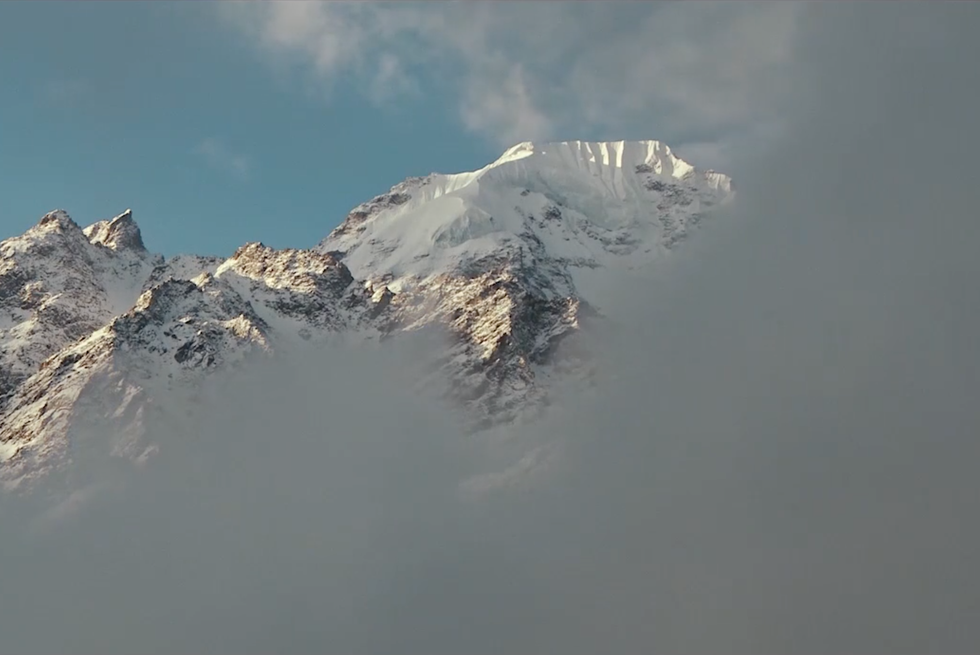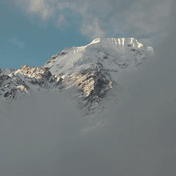
Om mani padme hum.
Om mani padme hum.
Om mani padme hum.
Gyalpo chants in a low vibration, twisting and smoothing the beads on his mala, touching them to his forehead. He stands in the bright light of a vast mountain valley, surrounded by rubble stretching out in every direction. Gyalpo has just found his deceased father’s yak herding rope, and a plastic container filled with flour. He unscrews the lid and discovers an uncracked egg hidden inside.
In 2015 a 7.8 earthquake struck Nepal, followed by a 7.3 magnitude “aftershock.” Over nine thousand people died and more than half a million people lost their homes. Among the vast destruction that followed in the wake of this double rupture, the communities of the Langtang valley suffered exceptional devastation. There in the high Himalayas, the earthquake caused a glacial collapse, triggering a massive avalanche of snow that buried the valley and killed over three hundred people in an instant. “Whatever the mountains gave to us, the mountains snatched away from us.”
We arrive at the Yellow Gompa, a Buddhist monastery in Kathmandu where Langtang survivors have set up a temporary camp. They have been evacuated from the valley due to the risk of landslides. Forty-nine days have passed since the earthquake and now the ghewa is taking place, a series of Buddhist funerary rites. We are enveloped by spinning mani wheels, drums, bells, and the dissonant blare of Tibetan ceremonial horns. Survivors, from Langtang and abroad, gather. A politician moves through the crowd as people appeal to him for government support and permission to resettle.
Kesang Tseten’s Trembling Mountain (2016) is a saga of destruction, loss, and endurance. By documenting the aftermath of disaster Tseten offers us a view inside the politics of rebuilding through the lens of a singular community. In doing so we move beyond the well-worn track of humanitarianism and are instead brought into a local story that involves a wide range of actors—from lamas, yak herders, tour guides, and entrepreneurial cheese-makers to foreign donors, trekkers, and anthropologists whose fates converged in Langtang, sacred hidden valley, Tibetan Buddhist refuge, and home of deities.
